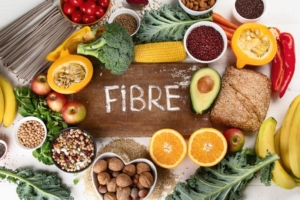
Two Types of Fibre
Dietary fibre, also known as roughage, is unique when it comes to how the body processes it. Unlike, fats, carbs or proteins, fibre passes through the digestive system relatively intact until it leaves the body. This plays a role in how it supports various health functions.
Not all fibre is the same, and different types have different properties. The two main categories are soluble fibre and insoluble fibre. Here is a basic breakdown of the two.
Soluble fibre
When combined with water, soluble fibre dissolves into a gel-like material. This helps it play an important role in overall digestive support.
Insoluble fibre
Insoluble fibre doesn’t dissolve in water, but it still helps your digestive function. This draws water into your stool, supporting regularity. Insoluble fibre is behind much of the common benefits that we think of when talking about fibre.
When it comes to insoluble fibre vs. soluble fibre, the two aren’t in competition with each other. Most plant foods have both types to some degree, but some have more of one than the other. And just like fats and protein, you want to have as many diverse sources as possible.
The Benefits of Fibre
Fibre helps your regularity by drawing water into your intestines, but it can also help you in other ways. For example, some studies report that having a fibre-rich meal means that you may feel full earlier. This could be a potential asset when it comes to portion control, a major struggle for people trying to lose weight. This isn’t the case for all fibres, which makes it all the more important to pursue a balanced mix of plant foods and grains.
